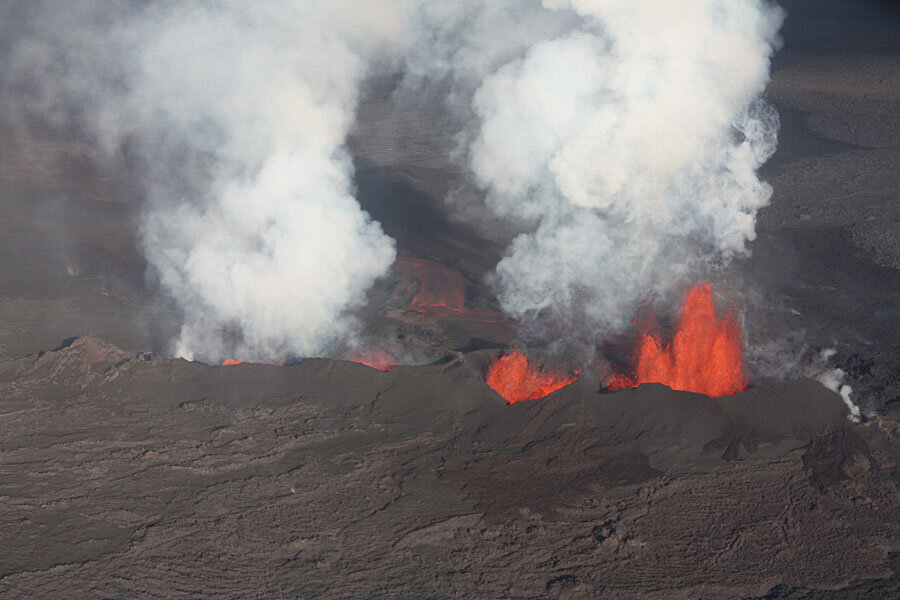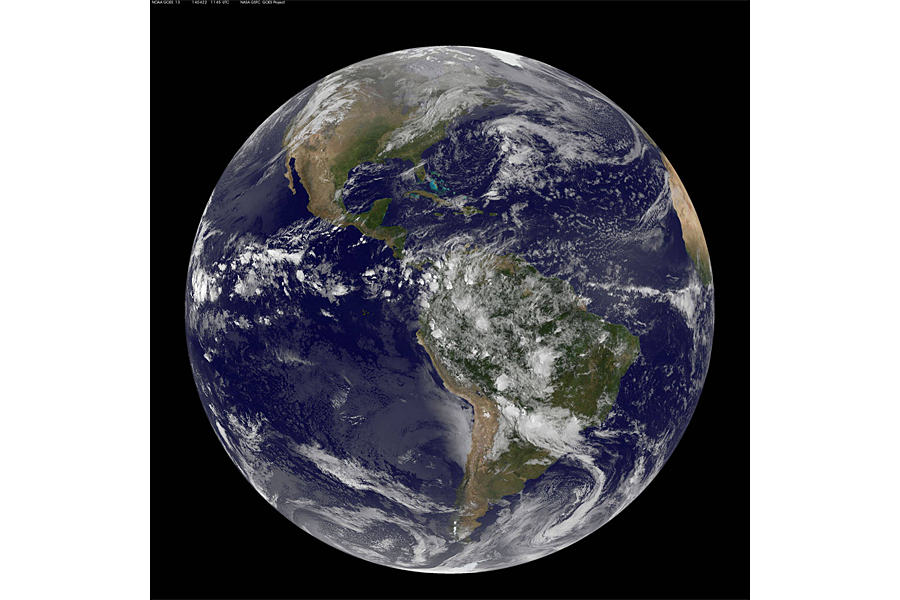Was Earth's water actually here 'since the very beginning'?
Loading...
Water sloshes over more than two-thirds of Earth’s surface, giving it the nickname of the Blue Planet. Without water, our planet would look very different.
But how did Earth get its iconic water in the first place?
Scientists have long theorized that a comet smashed into Earth billions of years ago, bringing water molecules to the young planet.
But water may have actually been around from the start of this planet's history – and that would be a fundamental shift in how scientists view the origins of water and may hold fresh insights for the hunt for extraterrestrial life.
In fact, water molecules might have hitched a ride on the grains of dust that accumulated to form the Earth, according to a new study.
“Water wasn’t added later to Earth. It’s been there since the very beginning,” according to our data, study lead author Lydia Hallis tells The Christian Science Monitor in an interview. “And it wasn’t added by comets.”
In this scenario, before the planets of our solar system formed, the water-rich dust in question was part of a disk around the Sun. Over time, that dust gathered to form Earth. Researchers report evidence for this explanation in a new paper published Thursday in the journal Science.
The popular comet explanation seemed to make sense, as icy comets are the most water-rich bodies in the solar system, explains Dr. Hallis. But the water covering Earth did not have the same hydrogen composition, a sort of water fingerprint, as comets that have been tested.
As a result, scientists began considering other possibilities.
But they were missing one key piece of information. “We didn’t know whether the water on the surface of the Earth was representative of the Earth’s original water,” says Hallis. A hunt for that ancestral water would need to go deep down into the Earth’s mantle to find a reservoir of water that had been untouched since the Earth’s formation.
So the scientists turned to volcanic rocks for time-capsule clues.
These rocks were formed from lava churned out during volcanic activity in Iceland and on Baffin Island in northern Canada. Having originated deep below the surface of the Earth, material in these rocks comes from very early on in the planet’s life. “It’s a time capsule to back in the early Earth,” says Hallis.
“What we’re actually measuring is small pockets of trapped glass inside mineral grains,” explains Hallis. Since the glass was lava trapped inside the rock, it was protected from weathering and contamination by surface water. A handful of H2 O molecules are preserved inside that glass.
The researchers used an ion microprobe to focus in on these tiny pockets of glass to detect the water molecules within. The hydrogen composition in that H2 O hinted at the water’s origins.
A watery fingerprint hint
Study co-author Karen Meech describes that indicative composition as a chemical fingerprint. “We have to look at the fingerprints both in space, for all the starting materials, and on Earth,” she says in an interview with the Monitor. Then, “like a detective, compare the two to see what the best sources are.”
That fingerprint is the ratio of hydrogen to deuterium in the water. With an atomic mass of two, deuterium is often called “heavy hydrogen,” as it is an isotope of hydrogen. The ratio of deuterium to the less massive (with an atomic mass of one) hydrogen, is a sort of fingerprint for different planetary bodies. Scientists have found distinct deuterium-hydrogen ratios on different planetary bodies throughout our solar system.
As the hydrogen composition of those water molecules differed significantly from those seen on icy comets, the rocks disputed the popular comet theory.
Too hot for water
The idea of having water from the very beginnings of Earth had previously been dismissed because of the heat involved in planet formation. Scientists thought that Earth would have been too hot and any water would have boiled away, explains Hallis.
But, she said in a news release, “Even though a good deal of water would have been lost at the surface through evaporation in the heat of the formation process, enough survived to form the world’s water.”
In the hunt for extraterrestrial life, water is key. So scientists are looking to our own watery planet for clues.
“We’ve got over 6,000 exoplanet systems or candidates that are known now and many of those have worlds in their host star’s habitable zone,” Dr. Meech says. Understanding the origins of our own water could help scientists hone in on planets that might also have ingredients for life. Water is “fundamentally important to life as we know it,” Meech says.
If rocky planets form with water-soaked dust particles accumulating, the potential for water-rich, and possibly habitable, planets elsewhere could be high, says Hallis.
Don't dismiss the comets just yet
Meech, an astronomer specializing in comets, isn’t so sure comets can be counted out of the equation yet.
“Yes, the water inside the Earth appears to be very light in deuterium and that would be more consistent with models that say you don’t need comets at all,” she says. “But we’re not quite there yet.”
Too few comets have actually been sampled, Meech says. Perhaps some comets have a hydrogen composition much more similar to the first waters of Earth. “I don’t think it rules out comets entirely,” she says.
Hallis agrees that there isn’t enough data, but proposes a different explanation.
“I don’t think that we got 100 percent of our water from this accretion method,” says Hallis. “But I would say that the majority of it is likely to have come from the accretion method. That is what our data points towards.”
Because the water from deep in the mantle is so different from the water covering the surface of Earth, Hallis thinks they might have come from two different events. Perhaps the surface water is in fact from a comet, she says.
But, “We’re in the beginnings of understanding this and we’re very far from saying this is definitely what happens,” Hallis says. “In a way, our data poses more questions than it answers.”
One thing it does say is that the Earth could contain much more water than just what is sloshing on the surface.
“Earth is a very water-rich planet both inside and on the surface,” Hallis says. “There’s lots of water down there.”










